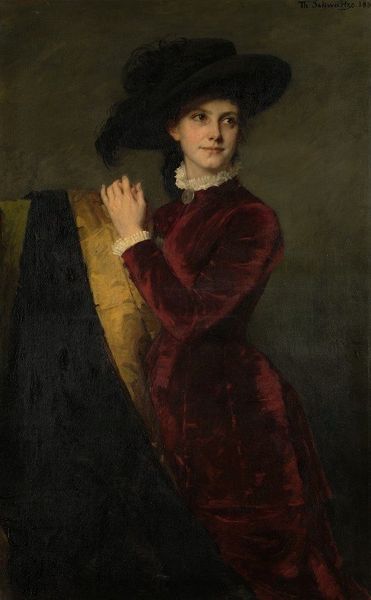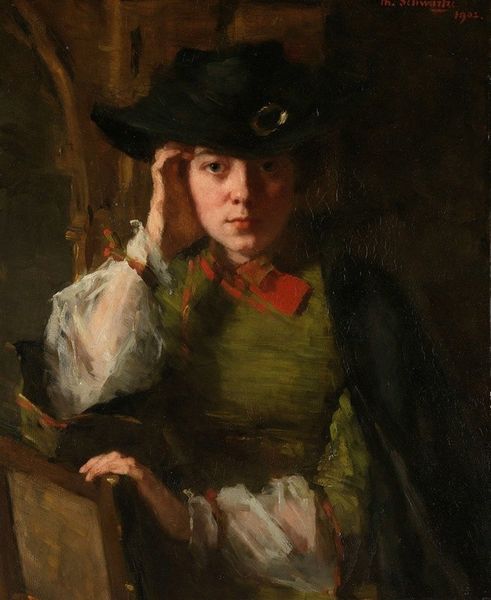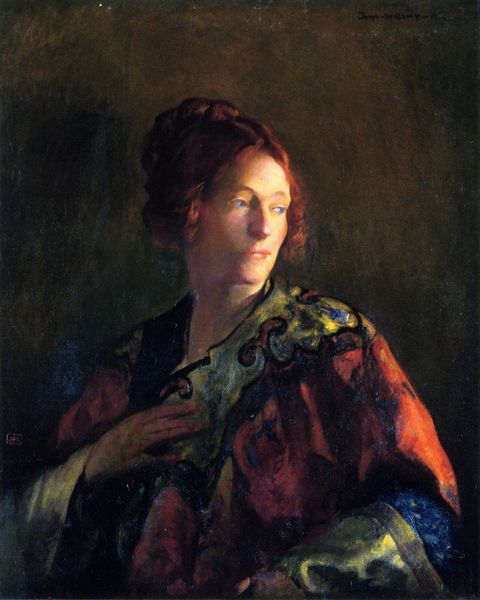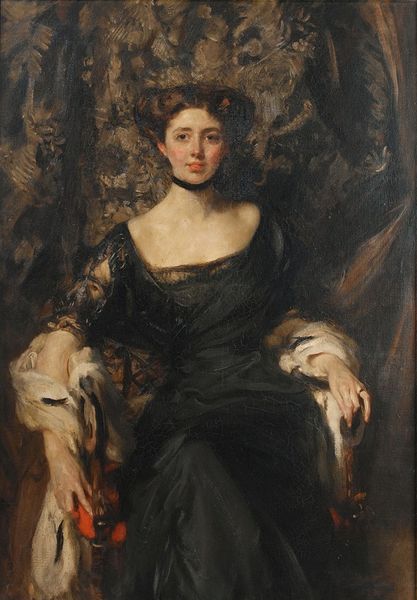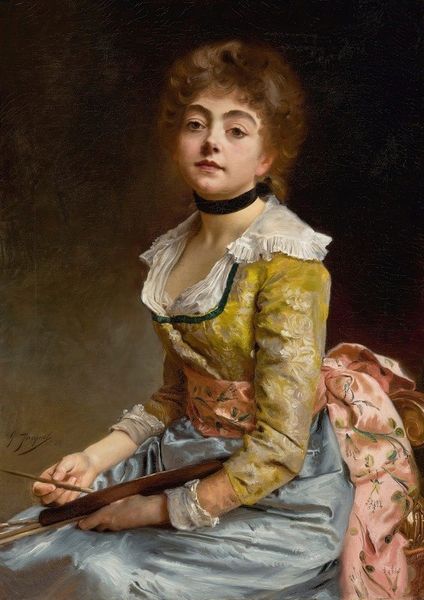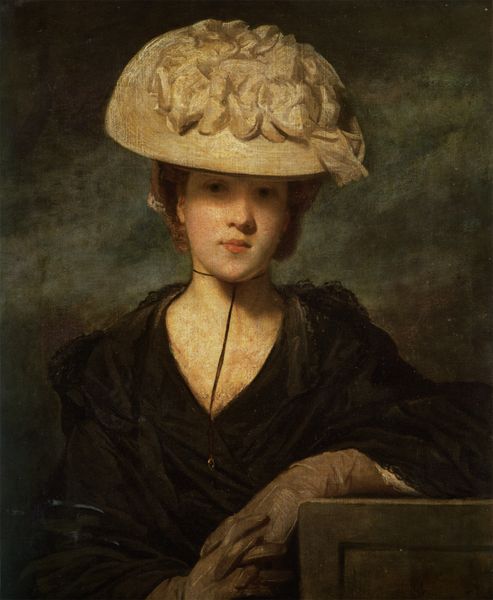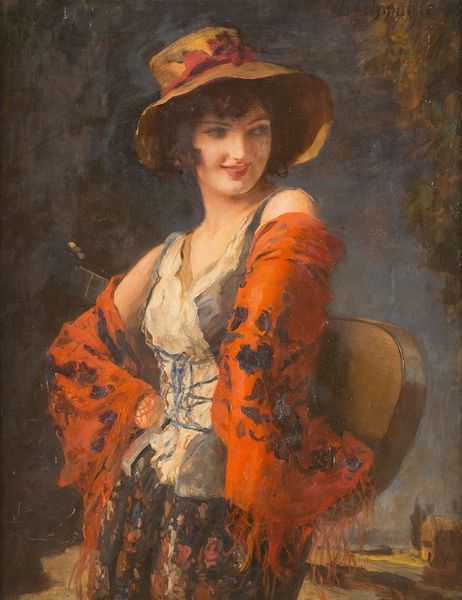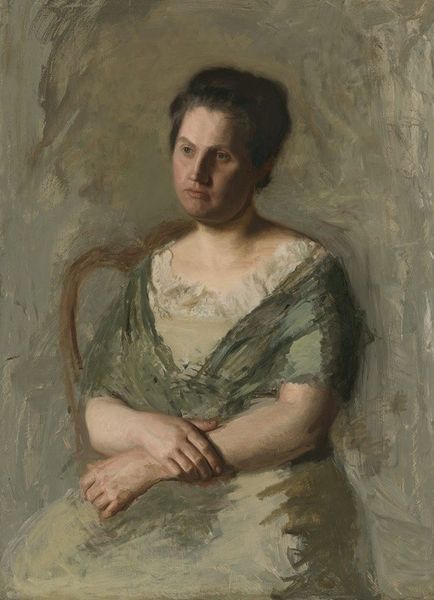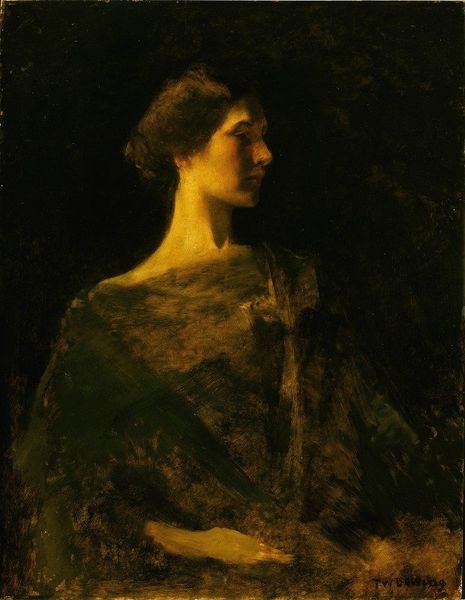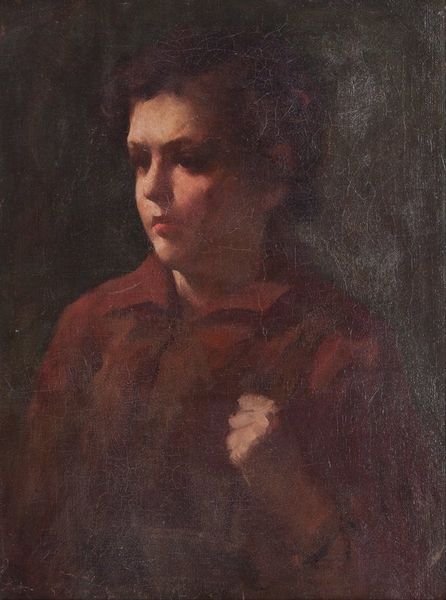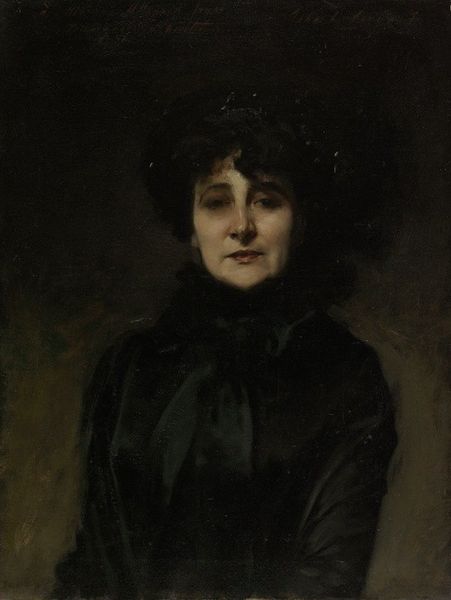
Copyright: Public domain
Curator: Up next, we have "The Coral Necklet" by Julian Ashton, painted around 1901. It's an oil on canvas portrait. Editor: I’m immediately struck by how intimate it feels. The woman's expression is so calm, almost wistful. But the dramatic chiaroscuro definitely amplifies a somber mood for me. Curator: Indeed, Ashton uses light and shadow masterfully. "The Coral Necklet" really exemplifies a turn-of-the-century fascination with interiority. There's an intimacy that speaks volumes about the role of women in society, and in art at that time. A tension between public image and private reflection perhaps? Editor: Precisely! And, looking at how the coral necklace drapes from her hands, the coral itself is of great interest, and I am wondering where the material came from, how it was traded and by whom? Curator: Those kinds of details speak to a larger narrative about trade, fashion, and the construction of identity during the late Victorian era, specifically. And the influence of art nouveau is palpable, though restrained. Editor: It also speaks volumes about artistic intention. Her careful manipulation of the beads suggests someone engaged in purposeful adornment. The lace details, I must add, give the work a particularly Victorian feel to the piece and showcase mastery of craft. You can see it also in how light renders material; look at how her skin and garment fabric react to light versus the matte finish of the background Curator: Definitely, you notice a deliberate tension in how much of the figure we can see because Ashton isn’t merely representing a woman; he's exploring themes of memory, status, and even longing. The muted colors enhance that introspective quality. And this fits into broader social and artistic movements challenging the old guard. Editor: The art schools would most likely be the driving force for art like this. These were places of creative exchange that facilitated an experimental approach to artistic work by working in proximity to your peers Curator: I agree wholeheartedly. These social art spaces would inevitably dictate what an art piece like this one can be and, perhaps more importantly, what it can signify. Editor: Well, this little glimpse into social-political Victorian undertones adds another layer of richness to our viewing, doesn’t it? Curator: Absolutely, I'll certainly see this painting in a completely new way after our exchange. Thank you.
Comments
No comments
Be the first to comment and join the conversation on the ultimate creative platform.
